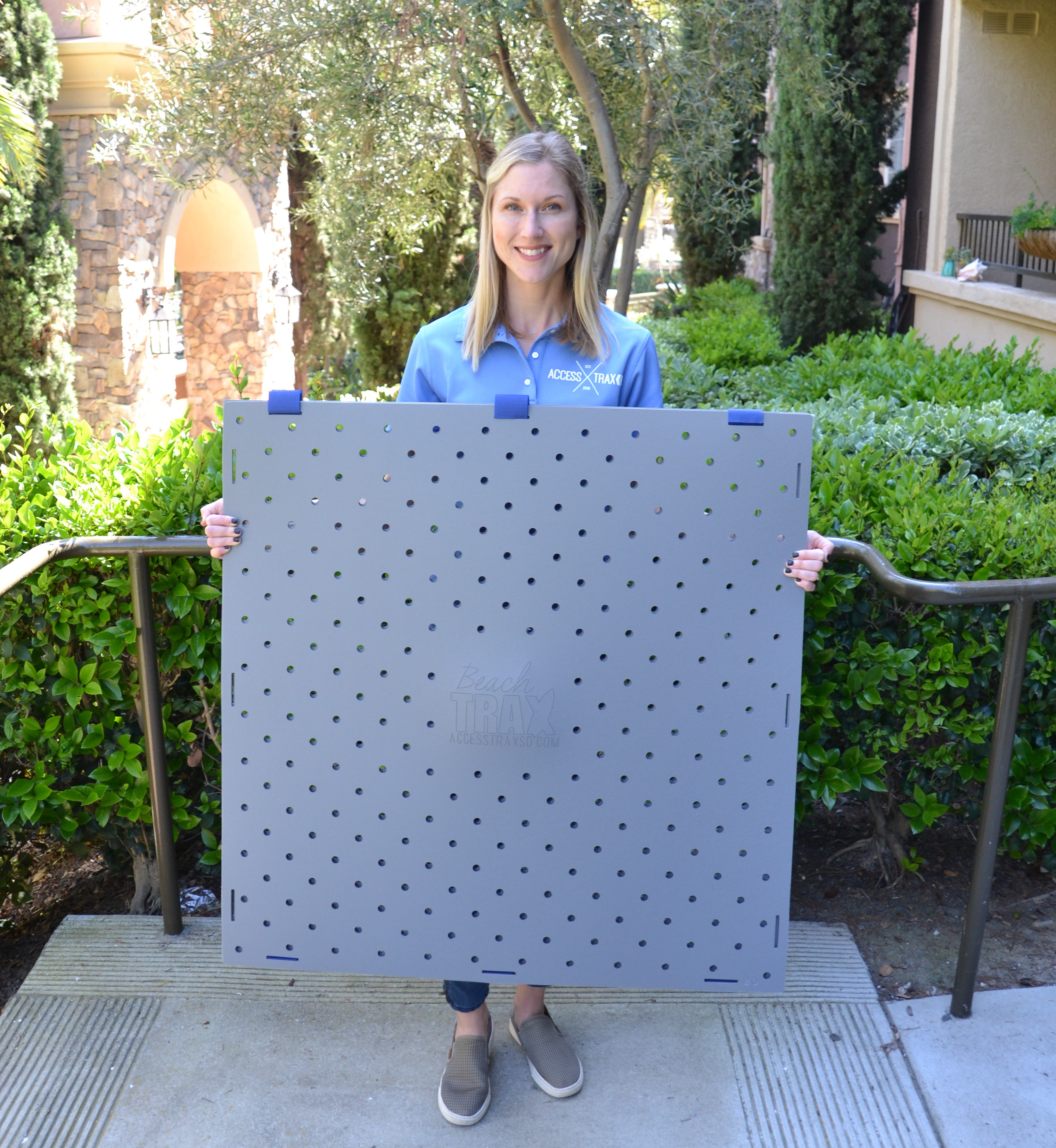Winning Grant Funding Propelled Access Trax Forward
June 17th 2020
A course in assistive technology changed Kelly Twichel’s and Eric Packard’s career paths. The two were in graduate school in 2016 at the University of St. Augustine studying to become occupational therapists. As part of their coursework, the class teammates were challenged to invent a product that would assist individuals with disabilities in their daily lives.
Their resulting invention was a portable pathway for people who use wheelchairs and other mobility devices, which they dubbed Access Trax.
Converting an Idea into a Business
Twichel and Packard were so passionate about their product that they decided to explore producing and selling it, but, as students, they had no income to start product manufacturing, Twichel explains. So they turned to their university to ask if there were any grant opportunities for which they might qualify.
After some research, they were told that the James McGuire Global Business Plan Competition was an event for which they qualified, but the grant application was due in March, only six weeks away. Many teams at other schools had been preparing their applications for months. Despite feeling stressed about the looming due date, Twichel and Packard got to work.
“We studied the requirements and went step-by-step through [the grant application instructions],” Twichel recalls, taking special care to answer every question as completely as possible. They got it in on time and then waited.
On May 3, they received an email announcing that Access Trax had been chosen as one of six finalists. (It turns out that Twichel had missed the previous email alerting them they had made the semi-finals.) That year, Access Trax was the only finalist from the US.
And, as a finalist, the company won a grant of $7,500. It wasn’t the grand prize, but this funding, paired with a surprise award of $5,000 from their school’s board of directors, was enough to cover the cost of creating prototypes required for manufacturing.
Most recently, the company was the grand prize winner of $50,000 in the FedEx Small Business Grant Contest, following on the heels of its Amber Grant win in December 2018.
In all, Access Trax has won grants totaling $75,750. Since 2017, the company has entered 11 different grant competitions and won 4, achieving a staggering 36% success rate.
Photo by Access Trax
Success Tips
As part of the process for developing the first grant application, Access Trax’s founders asked their grad school for feedback, to help improve their odds of winning. What they heard from administrators there and from other grant programs they entered confirmed they’ve done a number of things well.
Fortunately, almost any entrepreneur or business owner can replicate Twichel’s and Packard’s tactics. Twichel recommends that you:
- Read the application instructions carefully. Understand from the start what the grant committee is looking for, or hoping to read in your application.
And if you’re not clear about a particular question, email the grant sponsor to ask, Twichel says. “Don’t reduce your odds of winning by guessing.”
(You can find tips for writing a solid Amber Grant application here.)
- Focus on the problem your product or service solves. How does your offering change someone else’s life, by solving a nagging problem, improving a process, or creating new opportunities? In your application, emphasize how much of an impact your invention or development can have on the lives of a group of people, whatever their challenge.
Although Access Trax focused on individuals that could benefit from assistive technologies, your product or service might be as simple as providing healthy pre-packaged meals, reducing a family’s cell phone bill, or tracking wayward pets. Or it could address larger issues, like providing clean water, reducing plastic in the ocean, or creating a fast coronavirus test.
- Personalize the issue. “Bring people in to what the problem is,” says Twichel, by putting your audience in the shoes of the people you are trying to serve. Have a person at the center of the story, she says.
Access Trax started its application by setting the stage for the problem its product solves. “Imagine you’re a surfer. One morning, you’re surfing some great waves, fall off a wave, and hit the sandy ocean bottom. You know something’s very wrong instantly. You’ve suffered a spinal cord injury that changes your life forever.”
- Look at winning examples. If you can get access to successful grant submissions, read them carefully to understand what the applicant did well. But even if you can’t see past submissions for the program you’re applying to, search for winning grant applications for other programs, to get an idea of how you might present your story and request for support.
Or you may be asked to provide documentation that you’ve never heard of, such as a business model canvas or pitch deck. Before starting to draft a response that you think may hit the mark, research what these successful materials contain and look like. Find great templates to use as models. Twichel recommends Slidebean for well-designed slide deck templates.
To find more grant programs, Twichel advises joining groups where like-minded business owners congregate. She suggests Startupschool as one example, which is free online training for startup founders.
Odds are you may find resources specific to your city, college, or industry. It’s there you’re likely to hear about helpful resources and opportunities for funding.



















